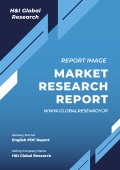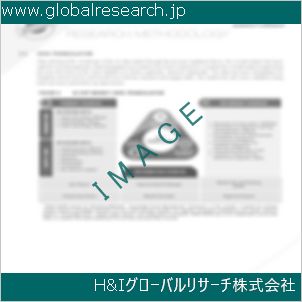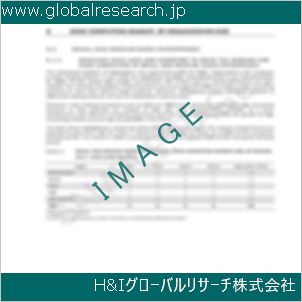1. Preface
1.1. Market Definition and Scope
1.2. Market Segmentation
1.3. Key Research Objectives
1.4. Research Highlights
2. Assumptions and Research Methodology
3. Executive Summary: Global Toxicology Drug Testing Market
4. Market Overview
4.1. Introduction
4.1.1. Segment Definition
4.2. Overview
4.3. Market Dynamics
4.3.1. Drivers
4.3.2. Restraints
4.3.3. Opportunities
4.4. Global Toxicology Drug Testing Market Analysis and Forecast, 2017-2031
4.4.1. Market Revenue Projections (US$ Mn)
5. Key Insights
5.1. Technological Advancements
5.2. Regulatory Scenario by Region/Globally
5.3. COVID-19 Pandemic Impact on Industry (value chain and short/mid/long term impact)
6. Global Toxicology Drug Testing Market Analysis and Forecast, by Testing Type
6.1. Introduction & Definition
6.2. Key Findings/Developments
6.3. Market Value Forecast, by Testing Type, 2017-2031
6.3.1. In Vitro
6.3.2. In Vivo
6.3.3. In Silico
6.4. Market Attractiveness Analysis, by Testing Type
7. Global Toxicology Drug Testing Market Analysis and Forecast, by Testing Method
7.1. Introduction & Definition
7.2. Key Findings/Developments
7.3. Market Value Forecast, by Testing Method, 2017-2031
7.3.1. Mass Spectrometry Imaging
7.3.2. Electron Microscopy
7.3.3. Fluorescence Labeling
7.3.4. Immunohistochemistry
7.3.5. Others
7.4. Market Attractiveness Analysis, by Testing Method
8. Global Toxicology Drug Testing Market Analysis and Forecast, by Application
8.1. Introduction & Definition
8.2. Key Findings/Developments
8.3. Market Value Forecast, by Application, 2017-2031
8.3.1. Drug Development
8.3.2. Substance Abuse and Addiction
8.3.3. Therapeutic Drug Monitoring
8.3.4. Others
8.4. Market Attractiveness Analysis, by Application
9. Global Toxicology Drug Testing Market Analysis and Forecast, by End-user
9.1. Introduction & Definition
9.2. Key Findings/Developments
9.3. Market Value Forecast, by End-user, 2017-2031
9.3.1. Cosmetics Industry
9.3.2. Healthcare Industry
9.3.2.1. Hospital and Clinics
9.3.2.2. Diagnostic Laboratories
9.3.2.3. Pharmaceutical & Biotechnology Companies
9.3.2.4. Others
9.3.3. Food Industry
9.3.4. Chemicals Industry
9.4. Market Attractiveness Analysis, by End-user
10. Global Toxicology Drug Testing Market Analysis and Forecast, by Region
10.1. Key Findings
10.2. Market Value Forecast, by Region, 2017-2031
10.2.1. North America
10.2.2. Europe
10.2.3. Asia Pacific
10.2.4. Latin America
10.2.5. Middle East & Africa
10.3. Market Attractiveness By Country/Region
11. North America Toxicology Drug Testing Market Analysis and Forecast
11.1. Introduction
11.1.1. Key Findings
11.2. Market Value Forecast, by Testing Type, 2017-2031
11.2.1. In Vitro
11.2.2. In Vivo
11.2.3. In Silico
11.3. Market Value Forecast, by Testing Method, 2017-2031
11.3.1. Mass Spectrometry Imaging
11.3.2. Electron Microscopy
11.3.3. Fluorescence Labeling
11.3.4. Immunohistochemistry
11.3.5. Others
11.4. Market Value Forecast, by Application, 2017-2031
11.4.1. Drug Development
11.4.2. Substance Abuse and Addiction
11.4.3. Therapeutic Drug Monitoring
11.4.4. Others
11.5. Market Value Forecast, by End-user, 2017-2031
11.5.1. Cosmetics Industry
11.5.2. Healthcare Industry
11.5.2.1. Hospital and Clinics
11.5.2.2. Diagnostic Laboratories
11.5.2.3. Pharmaceutical & Biotechnology Companies
11.5.2.4. Others
11.5.3. Food Industry
11.5.4. Chemicals Industry
11.6. Market Value Forecast, by Country/Sub-region, 2017-2031
11.6.1. U.S.
11.6.2. Canada
11.7. Market Attractiveness Analysis
11.7.1. By Testing Type
11.7.2. By Testing Method
11.7.3. By Application
11.7.4. By End-user
11.7.5. By Country/Sub-region
12. Europe Toxicology Drug Testing Market Analysis and Forecast
12.1. Introduction
12.1.1. Key Findings
12.2. Market Value Forecast, by Testing Type, 2017-2031
12.2.1. In Vitro
12.2.2. In Vivo
12.2.3. In Silico
12.3. Market Value Forecast, by Testing Method, 2017-2031
12.3.1. Mass Spectrometry Imaging
12.3.2. Electron Microscopy
12.3.3. Fluorescence Labeling
12.3.4. Immunohistochemistry
12.3.5. Others
12.4. Market Value Forecast, by Application, 2017-2031
12.4.1. Drug Development
12.4.2. Substance Abuse and Addiction
12.4.3. Therapeutic Drug Monitoring
12.4.4. Others
12.5. Market Value Forecast, by End-user, 2017-2031
12.5.1. Cosmetics Industry
12.5.2. Healthcare Industry
12.5.2.1. Hospital and Clinics
12.5.2.2. Diagnostic Laboratories
12.5.2.3. Pharmaceutical & Biotechnology Companies
12.5.2.4. Others
12.5.3. Food Industry
12.5.4. Chemicals Industry
12.6. Market Value Forecast, by Country/Sub-region, 2017-2031
12.6.1. Germany
12.6.2. U.K.
12.6.3. France
12.6.4. Italy
12.6.5. Spain
12.6.6. Rest of Europe
12.7. Market Attractiveness Analysis
12.7.1. By Testing Type
12.7.2. By Testing Method
12.7.3. By Application
12.7.4. By End-user
12.7.5. By Country/Sub-region
13. Asia Pacific Toxicology Drug Testing Market Analysis and Forecast
13.1. Introduction
13.1.1. Key Findings
13.2. Market Value Forecast, by Testing Type, 2017-2031
13.2.1. In Vitro
13.2.2. In Vivo
13.2.3. In Silico
13.3. Market Value Forecast, by Testing Method, 2017-2031
13.3.1. Mass Spectrometry Imaging
13.3.2. Electron Microscopy
13.3.3. Fluorescence Labeling
13.3.4. Immunohistochemistry
13.3.5. Others
13.4. Market Value Forecast, by Application, 2017-2031
13.4.1. Drug Development
13.4.2. Substance Abuse and Addiction
13.4.3. Therapeutic Drug Monitoring
13.4.4. Others
13.5. Market Value Forecast, by End-user, 2017-2031
13.5.1. Cosmetics Industry
13.5.2. Healthcare Industry
13.5.2.1. Hospital and Clinics
13.5.2.2. Diagnostic Laboratories
13.5.2.3. Pharmaceutical & Biotechnology Companies
13.5.2.4. Others
13.5.3. Food Industry
13.5.4. Chemicals Industry
13.6. Market Value Forecast, by Country/Sub-region, 2017-2031
13.6.1. China
13.6.2. Japan
13.6.3. India
13.6.4. Australia & New Zealand
13.6.5. Rest of Asia Pacific
13.7. Market Attractiveness Analysis
13.7.1. By Testing Type
13.7.2. By Testing Method
13.7.3. By Application
13.7.4. By End-user
13.7.5. By Country/Sub-region
14. Latin America Toxicology Drug Testing Market Analysis and Forecast
14.1. Introduction
14.1.1. Key Findings
14.2. Market Value Forecast, by Testing Type, 2017-2031
14.2.1. In Vitro
14.2.2. In Vivo
14.2.3. In Silico
14.3. Market Value Forecast, by Testing Method, 2017-2031
14.3.1. Mass Spectrometry Imaging
14.3.2. Electron Microscopy
14.3.3. Fluorescence Labeling
14.3.4. Immunohistochemistry
14.3.5. Others
14.4. Market Value Forecast, by Application, 2017-2031
14.4.1. Drug Development
14.4.2. Substance Abuse and Addiction
14.4.3. Therapeutic Drug Monitoring
14.4.4. Others
14.5. Market Value Forecast, by End-user, 2017-2031
14.5.1. Cosmetics Industry
14.5.2. Healthcare Industry
14.5.2.1. Hospital and Clinics
14.5.2.2. Diagnostic Laboratories
14.5.2.3. Pharmaceutical & Biotechnology Companies
14.5.2.4. Others
14.5.3. Food Industry
14.5.4. Chemicals Industry
14.6. Market Value Forecast, by Country/Sub-region, 2017-2031
14.6.1. Brazil
14.6.2. Mexico
14.6.3. Rest of Latin America
14.7. Market Attractiveness Analysis
14.7.1. By Testing Type
14.7.2. By Testing Method
14.7.3. By Application
14.7.4. By End-user
14.7.5. By Country/Sub-region
15. Middle East & Africa Toxicology Drug Testing Market Analysis and Forecast
15.1. Introduction
15.1.1. Key Findings
15.2. Market Value Forecast, by Testing Type, 2017-2031
15.2.1. In Vitro
15.2.2. In Vivo
15.2.3. In Silico
15.3. Market Value Forecast, by Testing Method, 2017-2031
15.3.1. Mass Spectrometry Imaging
15.3.2. Electron Microscopy
15.3.3. Fluorescence Labeling
15.3.4. Immunohistochemistry
15.3.5. Others
15.4. Market Value Forecast, by End-user, 2017-2031
15.4.1. Drug Development
15.4.2. Substance Abuse and Addiction
15.4.3. Therapeutic Drug Monitoring
15.4.4. Others
15.5. Market Value Forecast, by Application, 2017-2031
15.5.1. Cosmetics Industry
15.5.2. Healthcare Industry
15.5.2.1. Hospital and Clinics
15.5.2.2. Diagnostic Laboratories
15.5.2.3. Pharmaceutical & Biotechnology Companies
15.5.2.4. Others
15.5.3. Food Industry
15.5.4. Chemicals Industry
15.6. Market Value Forecast, by Country/Sub-region, 2017-2031
15.6.1. GCC Countries
15.6.2. South Africa
15.6.3. Rest of Middle East & Africa
15.7. Market Attractiveness Analysis
15.7.1. By Testing Type
15.7.2. By Testing Method
15.7.3. By Application
15.7.4. By End-user
15.7.5. By Country/Sub-region
16. Competition Landscape
16.1. Market Player – Competition Matrix (By Tier and Size of Companies)
16.2. Market Share Analysis, by Company (2022)
16.3. Company Profiles
16.3.1. TDAL Labs
16.3.1.1. Company Overview (HQ, Business Segments, Employee Strength)
16.3.1.2. Product Portfolio
16.3.1.3. Financial Overview
16.3.1.4. SWOT Analysis
16.3.1.5. Strategic Overview
16.3.2. Thermo Fisher Scientific Inc.
16.3.2.1. Company Overview (HQ, Business Segments, Employee Strength)
16.3.2.2. Product Portfolio
16.3.2.3. Financial Overview
16.3.2.4. SWOT Analysis
16.3.2.5. Strategic Overview
16.3.3. Abbott
16.3.3.1. Company Overview (HQ, Business Segments, Employee Strength)
16.3.3.2. Product Portfolio
16.3.3.3. Financial Overview
16.3.3.4. SWOT Analysis
16.3.3.5. Strategic Overview
16.3.4. Icahn School of Medicine at Mount Sinai
16.3.4.1. Company Overview (HQ, Business Segments, Employee Strength)
16.3.4.2. Product Portfolio
16.3.4.3. Financial Overview
16.3.4.4. SWOT Analysis
16.3.4.5. Strategic Overview
16.3.5. Clinisys, Inc.
16.3.5.1. Company Overview (HQ, Business Segments, Employee Strength)
16.3.5.2. Product Portfolio
16.3.5.3. Financial Overview
16.3.5.4. SWOT Analysis
16.3.5.5. Strategic Overview
16.3.6. Laboratory Corporation of America Holdings
16.3.6.1. Company Overview (HQ, Business Segments, Employee Strength)
16.3.6.2. Product Portfolio
16.3.6.3. Financial Overview
16.3.6.4. SWOT Analysis
16.3.6.5. Strategic Overview
16.3.7. SLUCARE
16.3.7.1. Company Overview (HQ, Business Segments, Employee Strength)
16.3.7.2. Product Portfolio
16.3.7.3. Financial Overview
16.3.7.4. SWOT Analysis
16.3.7.5. Strategic Overview
16.3.8. Keystone Lab
16.3.8.1. Company Overview (HQ, Business Segments, Employee Strength)
16.3.8.2. Product Portfolio
16.3.8.3. Financial Overview
16.3.8.4. SWOT Analysis
16.3.8.5. Strategic Overview
16.3.9. Shimadzu Scientific Instruments
16.3.9.1. Company Overview (HQ, Business Segments, Employee Strength)
16.3.9.2. Product Portfolio
16.3.9.3. Financial Overview
16.3.9.4. SWOT Analysis
16.3.9.5. Strategic Overview
16.3.10. Ganesh Diagnostic & Imaging Centre Pvt. Ltd.
16.3.10.1. Company Overview (HQ, Business Segments, Employee Strength)
16.3.10.2. Product Portfolio
16.3.10.3. Financial Overview
16.3.10.4. SWOT Analysis
16.3.10.5. Strategic Overview
16.3.11. Other Players
16.3.11.1. Company Overview (HQ, Business Segments, Employee Strength)
16.3.11.2. Product Portfolio
16.3.11.3. Financial Overview
16.3.11.4. SWOT Analysis
16.3.11.5. Strategic Overview
❖ 免責事項 ❖
http://www.globalresearch.jp/disclaimer












